In the previous post, we discussed how vSphere Replication works, and types of replication scenarios where we can use and implement replication.
In this vSphere Replication part 2, we’ll focus on how to install vSphere Replication (VR) and configure a replication scenario between two sites with VvSAN.
The latest version of vSphere Replication is 8.2.
vSphere Replication 8.2 can be used to replicate the following versions:
- Supports vCenter 6.7 U2, 6.7 U1, 6.7.0, 6.5 U3, 6.5 U2, 6.5 U1, 6.5.0, 6.0 U3
- Supports ESXi 6.7 U2, 6.7 U1, 6.7.0, 6.5 U2, 6.5 U1, 6.5.0, 6.0 U3
- Supports vSAN 6.7 U2, 6.7 U1, 6.7, 6.6.1 U3, 6.6.1 U2, 6.6.1, 6.6, 6.5
Check vSphere Replication matrix HERE.
Upgrade to this 8.2 version can be done from 6.5.x, but only using ISO. It’s not possible from the VMware Update Repository from the VAMI of the vSphere Replication appliance.
Upgrade path is the following order: 8.2 – 8.1.2 – 8.1.1 – 8.1 – 6.5.1
Just a quick look of what is new in this version 8.2.
- VMware vSphere Replication 8.2 adds compatibility with VMware vSphere 6.7 Update 2
- Support for VM encryption:
You can replicate encrypted virtual machines if you are using VMware vSphere 6.7 Update 1 or later.
- Minimize security risks by enabling network encryption:
You can enable encryption of replication data transfer in VMware vSphere Replication 8.2 if you are using VMware vSphere 6.0 or later.
- Enhancements to the Site Recovery user interface:
With vSphere Replication 8.2, you can monitor target datastores in the replication details pane of the Site Recovery user interface, and use vSphere Replication reports that display transferred bytes per virtual machine and per hour.
- vRealize Operations Management Pack:
The new vRealize Operations Management Pack for vSphere Replication 8.2 provides increased visibility into the status of your vSphere Replication environment, RPO violations, and other details. For more information, see VMware vRealize Operations Management Pack for vSphere Replication 8.2 Release Notes.
- vRealize Orchestrator Plug-In for vSphere Replication 8.2. For information about new workflows, see VMware vRealize Orchestrator Plug-In for vSphere Replication 8.2 Release Notes.
vSphere Replication can be downloaded from your VMware account HERE.
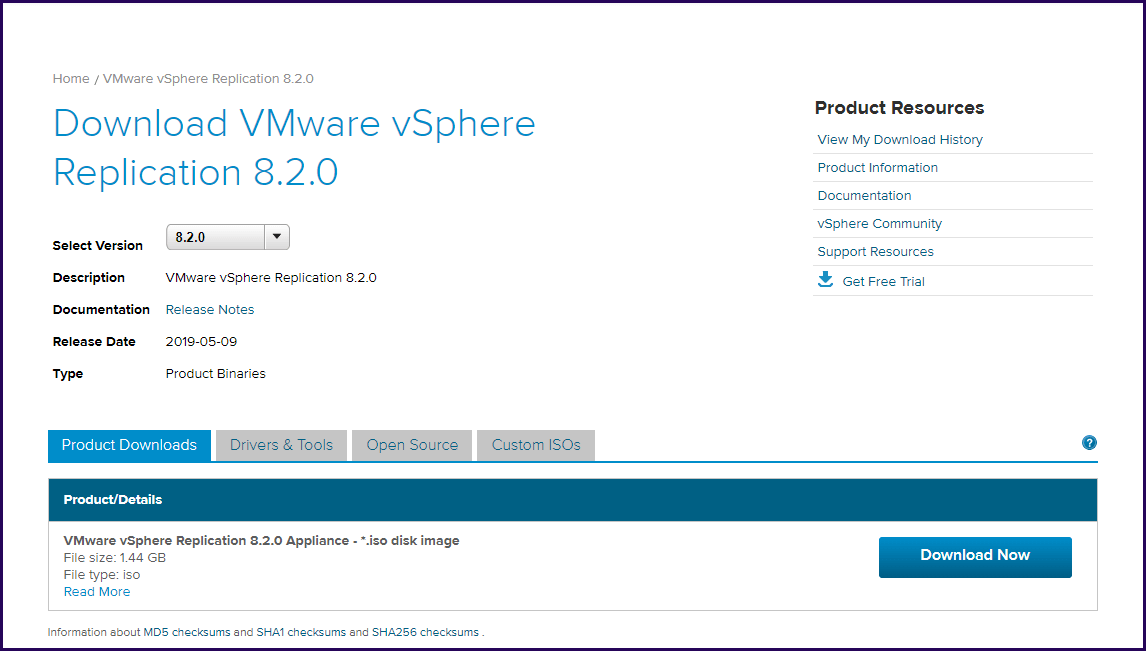
The file is an ISO (no boot), so you can mount in a VM, or you can extract the ISO. Then deploy as an OVF in your vCenter.
To install vSphere Replication appliance (that includes Manager and Server), we need to select the files vSphere_Replication_OVF10.ovf. If is to install an additional vSphere Replication Server, then we need to select and deploy vSphere_Replication_AddOn_OVF10.ovf.
In both cases, select the vmdk files so that the import of the OVF can start.

First, let us check what are the requirements to install vSphere Replication:
vSphere Replication Requirements:
Besides the supported versions for 8.2, vSphere Replication doesn’t have any special resource requirements.
vSphere Replication has two types of implementation:
- Smaller: VR with 2vCPU with 8Gb Memory and 26Gb of Virtual Disk.
- Large: VR with 4vCPU with 16Gb Memory and 26Gb Virtual Disk.
Depending on the amount of VMs to replicate, be aware that vSphere Replication consumes negligible CPU and memory on the source host ESX.
Too many replications can consume a lot of resources on your source ESXi hosts.
One of the most critical requirements for your vSphere Replication implementation is network bandwidth, mainly if you are replicating between two different locations. But also between your virtual environment and your Storage System.
The storage network and vCenter can be stressful during replication.
When you plan your deployment, be aware of the following levels of traffic:
- Between the host running the replicated virtual machine and the vSphere Replication server.
- Between the vSphere Replication server and a host with access to the replication target datastore.
- Between the host and storage.
- Between storage and the host during redo log snapshots.
The link speed between the two sites is essential.
As we know, vCenter only uses 70% of the network link, this means that if you have a 100Mb link between locations, vSphere Replication has a replication speed around 30Gb per hour. The link speed between the sites is very important to have an efficient replication of your VMs.
Check VMware documentation regarding Calculation Bandwidth for vSphere Replication.
Note: vSphere Replication also consumes CPU on the Guest OS of the replicated virtual machines. So count also some CPU usage on your VMs during replication.
Environment for this vSphere Replication deployment.
For this scenario, we use the following versions in both sites:
- vSphere Replication 8.2
- vCenter 6.7.0.31100 Build 13843380
- vSphere 6.7. 201906002 build 13981272
- vSAN 6.7 Express Path 10 build 13981272

Install vSphere Replication Step by Step.
- Login to your vCenter in site 1 and deploy the VR OVF.
- Next, select the files to import and use in the OVF.
- Select the folder location for the OVF.
- Next, select the Cluster (if DRS is enabled) or ESXi host where the vSphere Replication appliance will work.
- Next, accept the license agreement and continue to Review details tab.
- Next, we need to select the size of our vSphere Replication Appliance.
Depending on the size of your environment, you need to select the size of our vSphere Replication Appliance. By default, the deployment selects large 4 vCPU. If you have a small environment (example 3 or 4 hosts and just a few VMs), then the small version works.
In this case, since it is a small environment and a test environment, we select the small version.
Note: Be aware that VMware doesn’t recommend changing the size or any configurations on the appliance after been deployed. So choose wisely.
- Next, select the Datastore for the appliance. Since we are installing vSphere Replication in a vSAN, the Datastore is from the vSAN.
- Next, select the virtual network that the appliance will use.
In the IP Allocation setting, you can use IPV4 or IPV6. Using both is not supported.
- Management traffic between vSphere Replication Management Server and vSphere Replication Server.
- Replication traffic from the source ESXi hosts to the vSphere Replication Server.
- Traffic between vCenter Server and vSphere Replication Management Server.
- NFC (Network File Copy) traffic, which is the traffic from the vSphere Replication Server appliance at the target site to the destination datastores.
- After we configured the vSphere Replication Appliance Network, we need to enter the values for customization (IP address, Gateway, DNS Name, NTP Server, DNS Server, Domain).
- Next, we need to select the binding service where vSphere Replication Appliance will bind to vCenter service and as it says in the validation message, make sure both(VR and vCenter or PSC) are in the same network, and both can reach each other.
- Next, check the details, and if all the details are correct, click Finish to start the deployment.
- Next, vSphere Replication deployment is finished and is ready to configure.
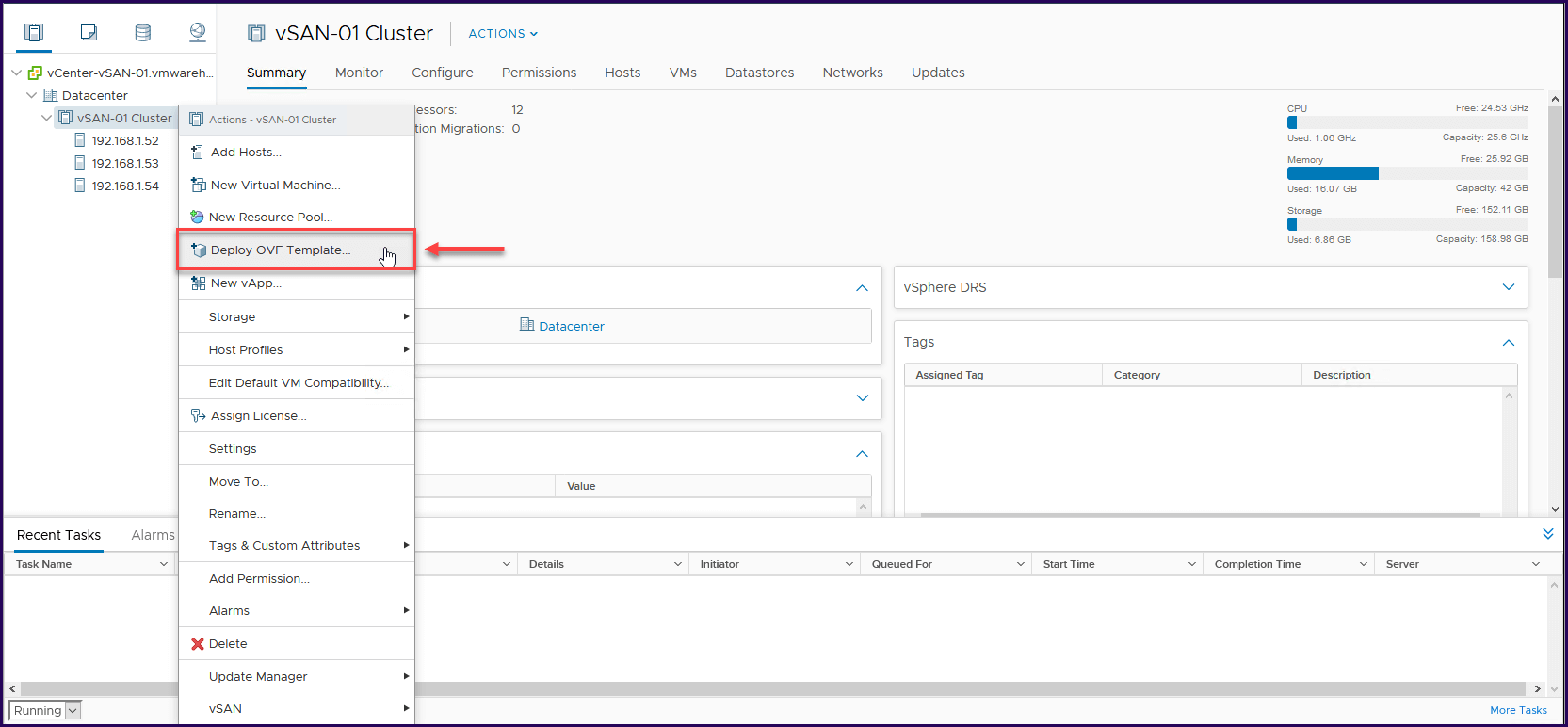

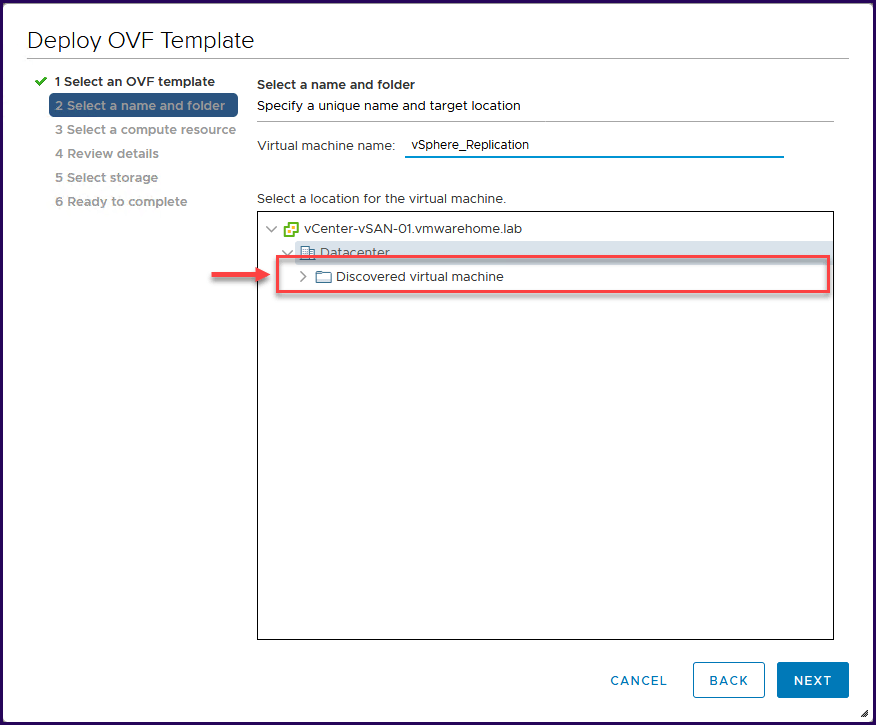
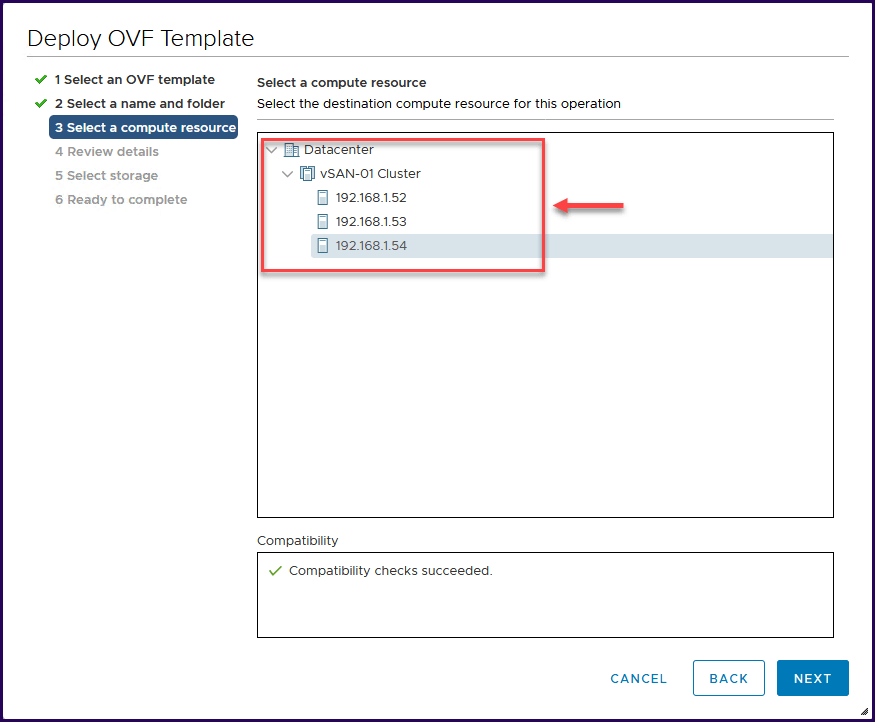
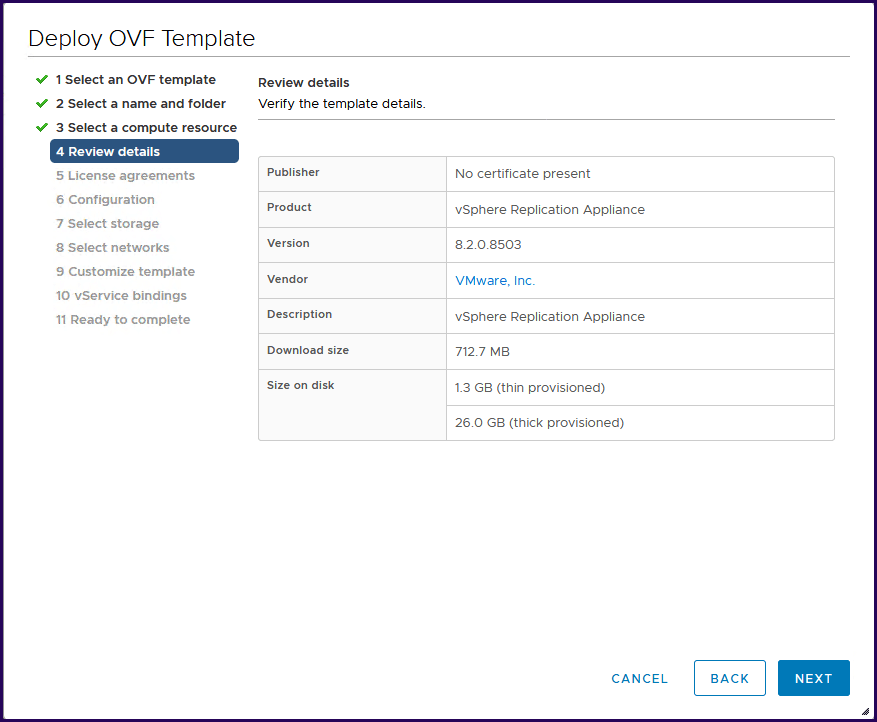
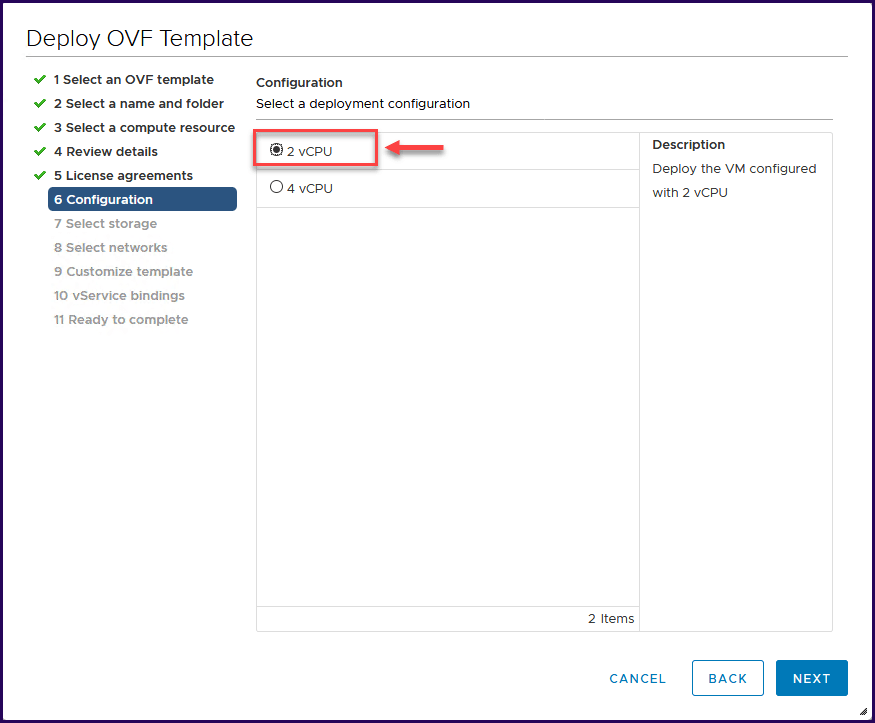
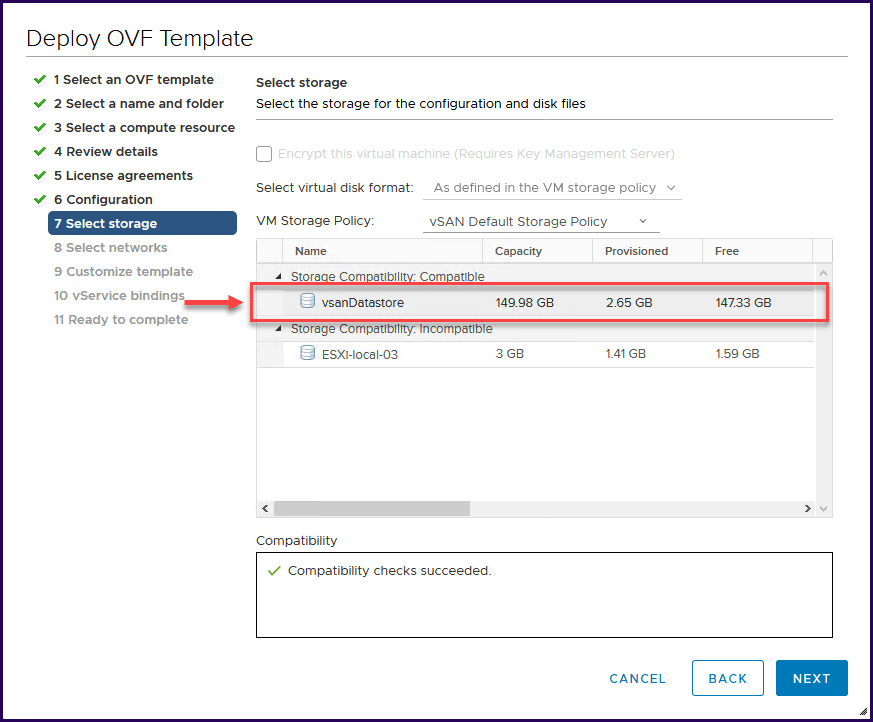
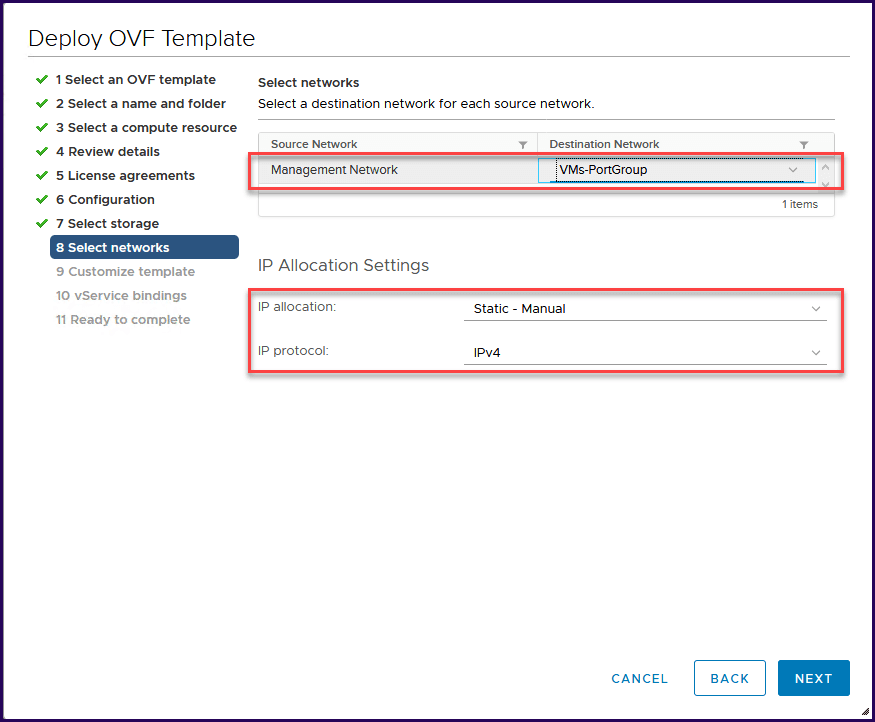
By default, vSphere Replication Appliance deployment only uses one network interface for all traffic, such as:
In our example, we will not change the default. However, it is possible to add additional network interfaces to vSphere Replication Appliance and configure them in VR VAMI. We can do this to isolate the traffic or balance the traffic. So that vCenter/ESXi hosts are not affected by the replications.
For that, we need to create an additional VMkernel Adapter and reserve a VMkernel NIC in each ESXi for each VMkernel Adapter created for vSphere Replication.
Next is an example of how to create a VMkernel Adapter for vSphere Replication.
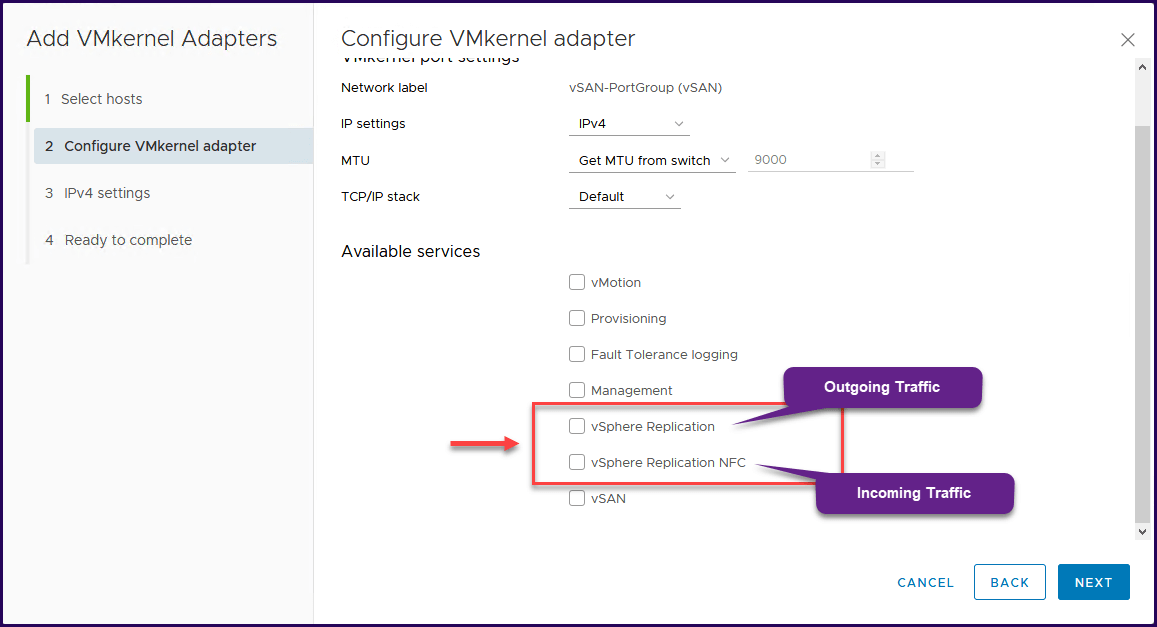
Creating an isolated network for vSphere Replication (outgoing and incoming connections) have more configurations and many changes at ESXi level and VR Appliance level.
Showing all the process of how to create a vSphere Replication isolated network would need an independent article and cannot fit on this one.
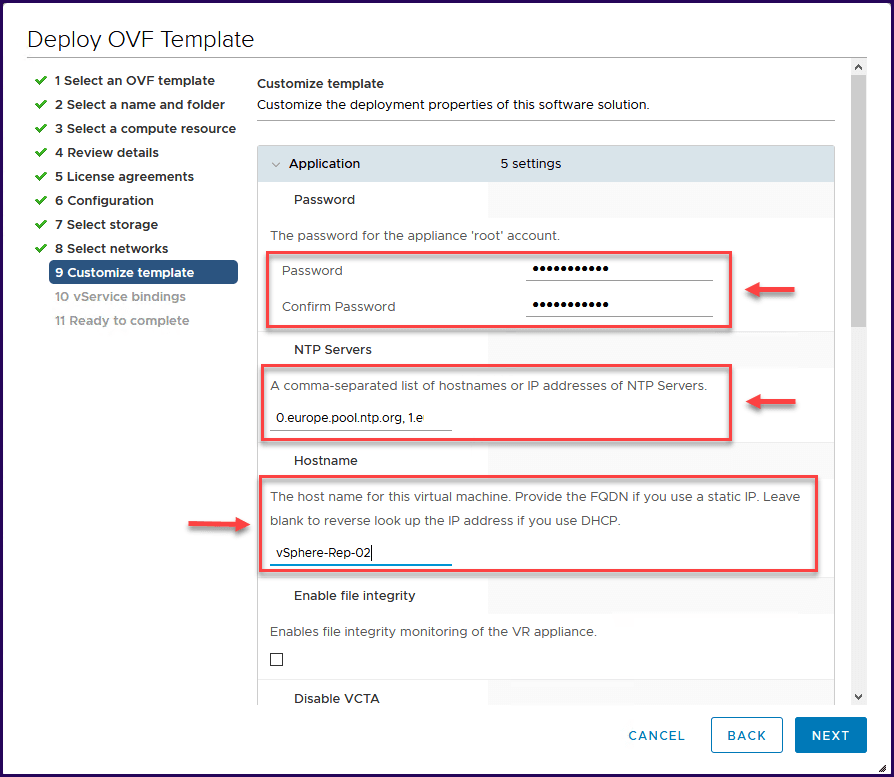
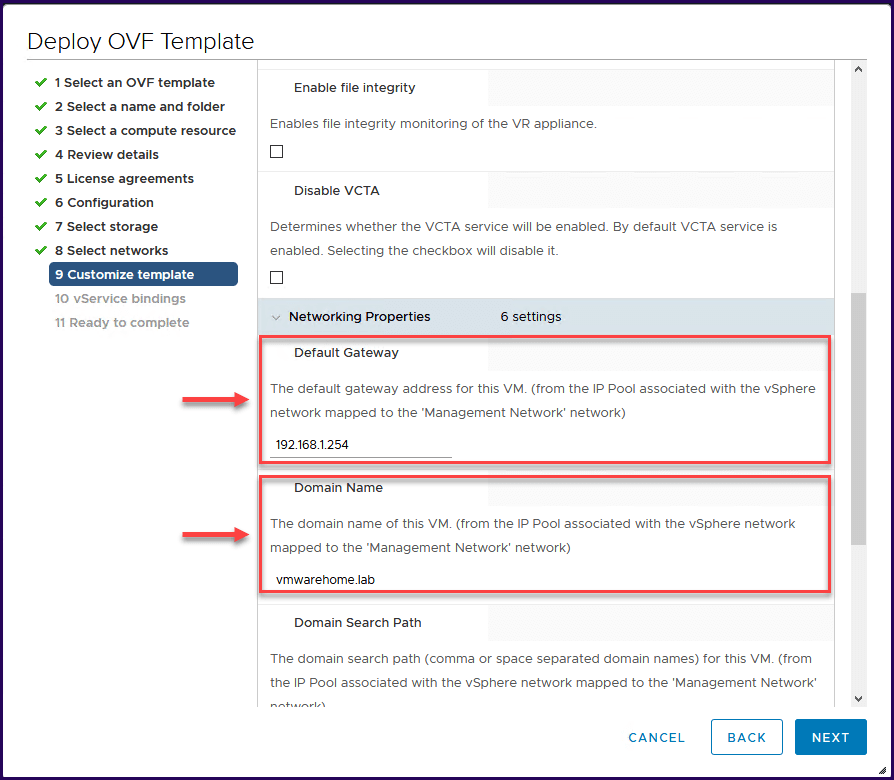
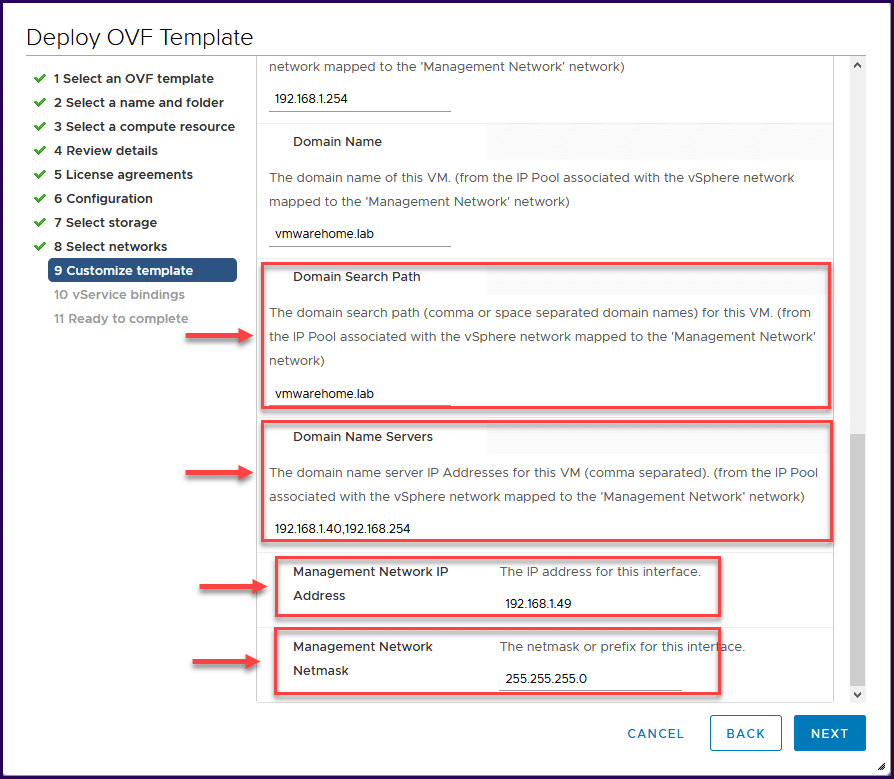
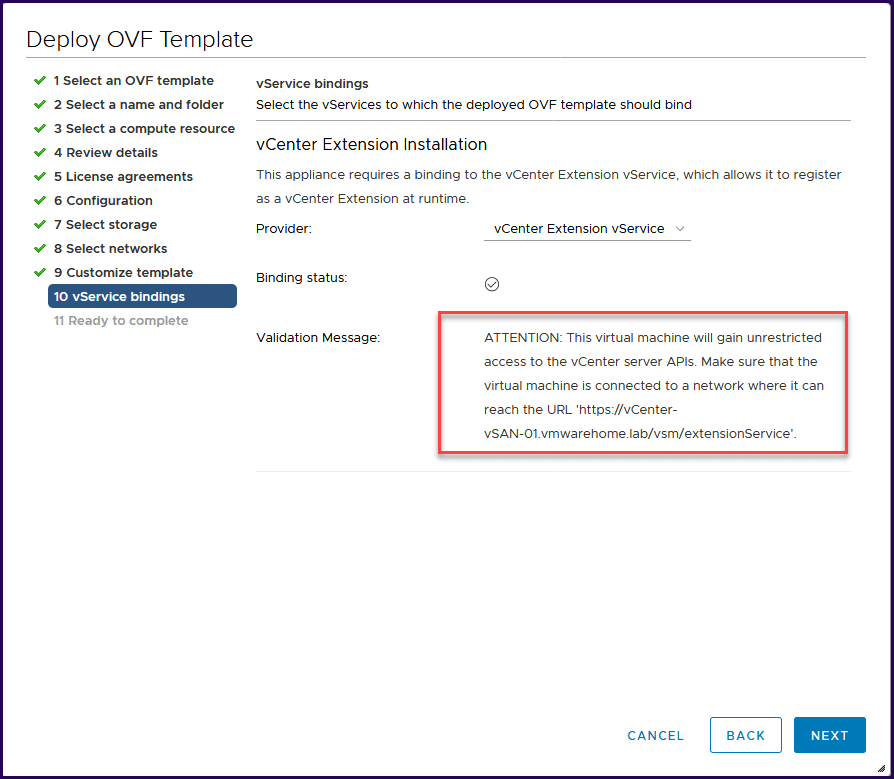
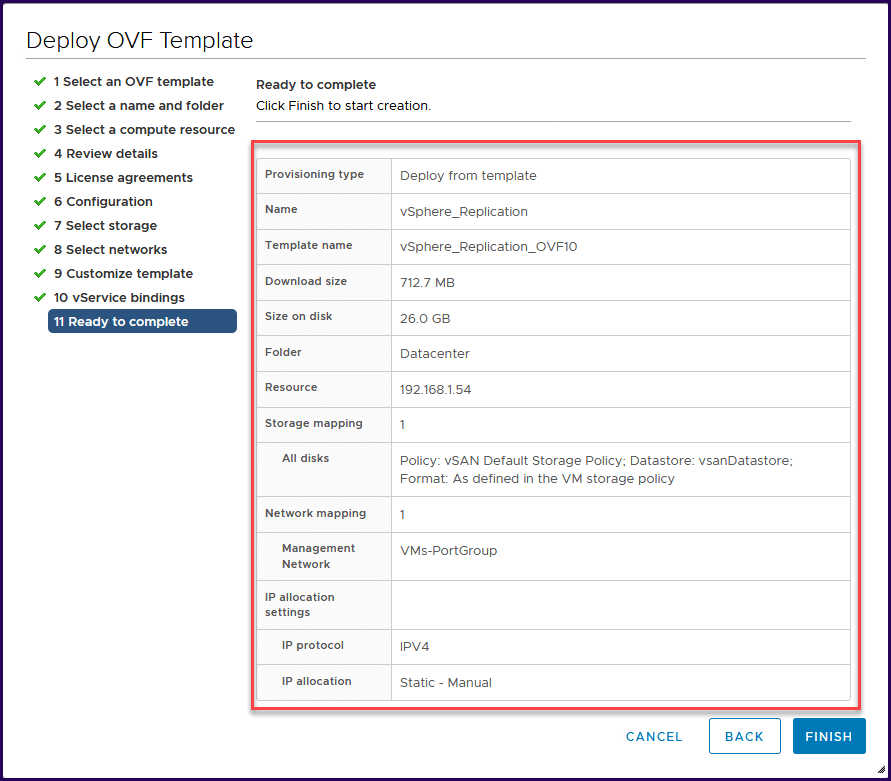
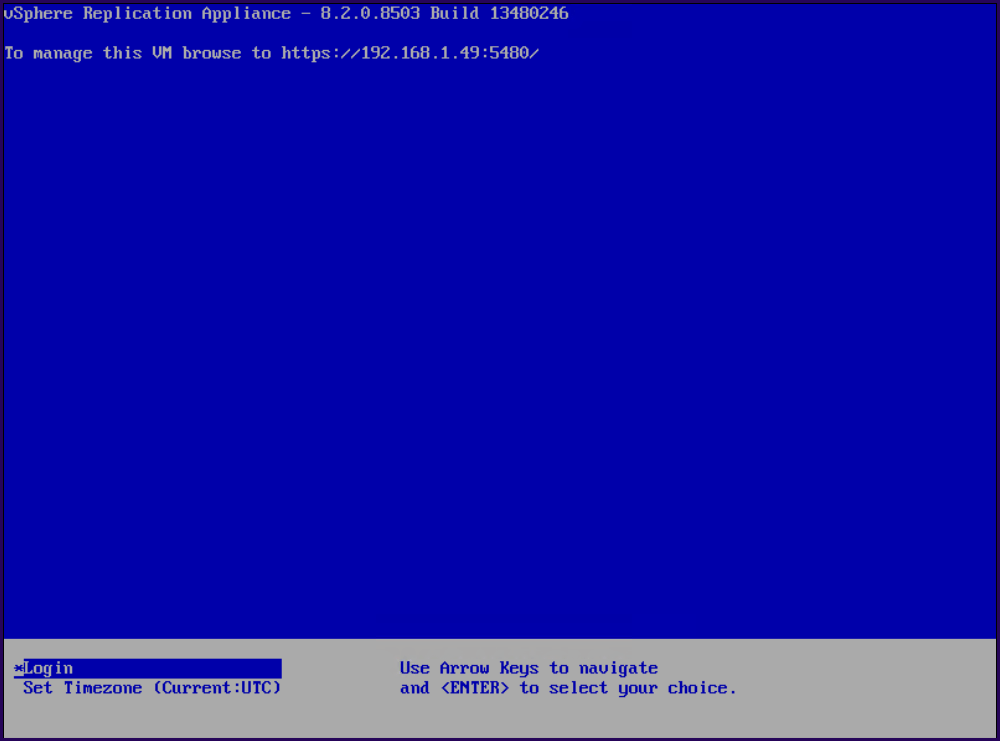
How to register vSphere Replication in vCenter
- To register vSphere Replication appliance in vCenter, we need to enter Appliance VAMI using https://IP-Address:5480
Enter the VAMI with the credentials:
User: root, Pass: the password that was set in the deployment (step 9) - Register VR in vCenter
- Stop/Start/Restart VR Services
- Change VAMI Network Settings
- Change VAMI password
- Set Time
- Update VAMI (it depends from which version we are updating)
- Next, we need to register vSphere Replication in vCenter
- After that confirm the SSL Certificate from vCenter (meaning that was able to connect to vCenter) to continue
- Next, go back to your vCenter. If you are already logged in, just log out and log in again. Then you should see the information regarding the Plugin for vSphere Replication that was deployed. Refresh your browser so that Site Recovery shortcut is available
- You now can start the vSphere Replication by clicking Home, or Menu in vCenter and select Site Recovery shortcut
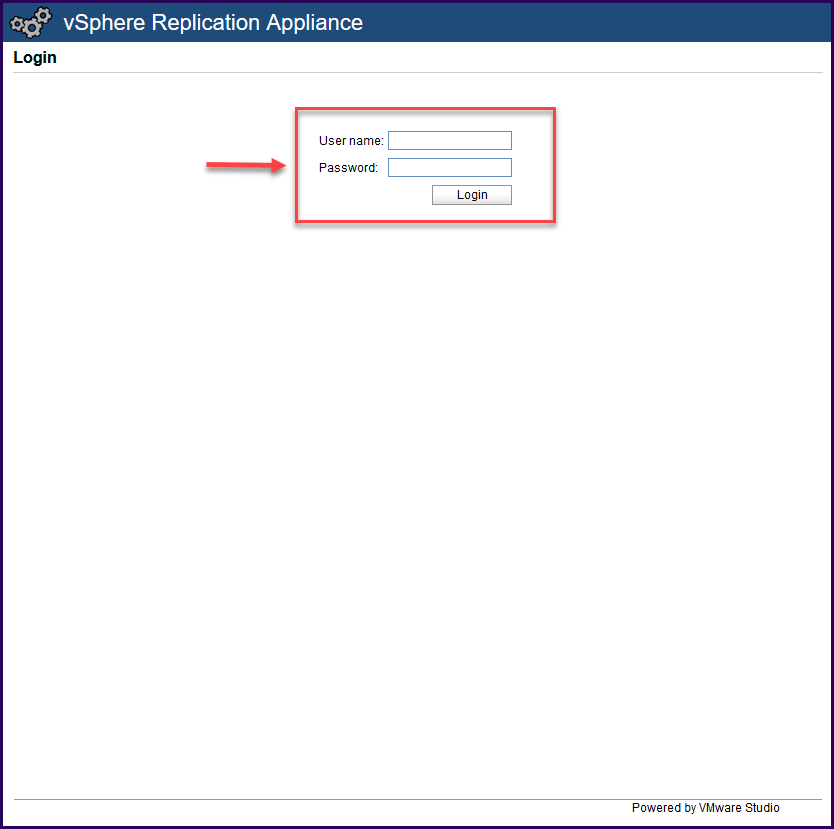
In VR VAMI we can:
Go to tab Configuration and add all the information from your vCenter.
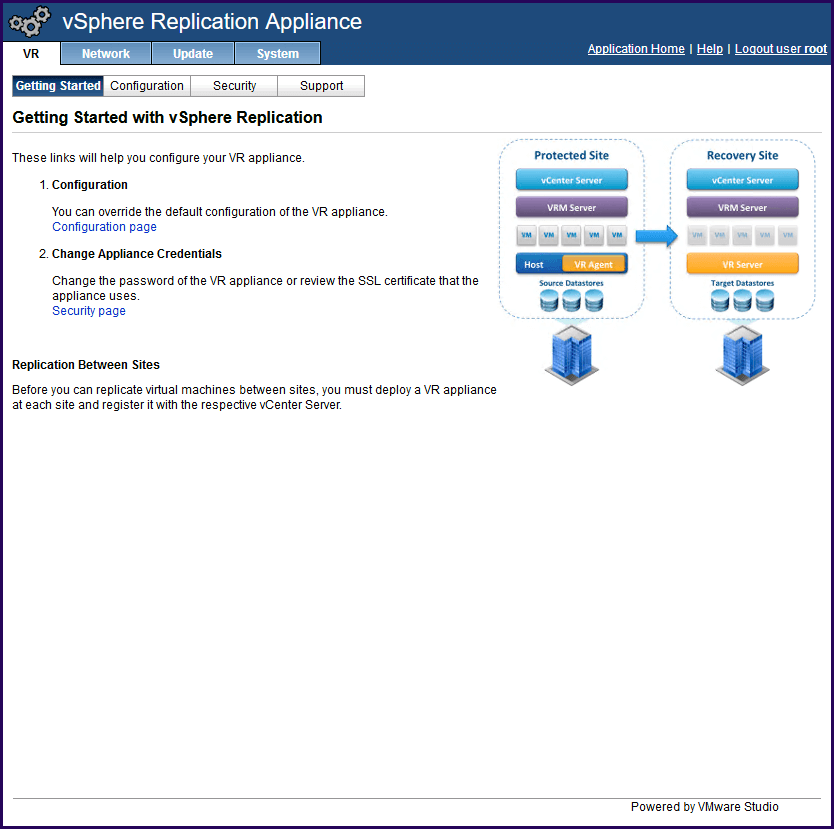
After adding all information about your vCenter and add particularly the LookupService address (that is: https:/ip-address:7444/lookupservice/sdk), click the Save and Restart Service.
In the IP Address for incoming traffic, the default is your VR management IP address. This value only changes if you have a different network to receive incoming connections (like discussed above regarding isolated vSphere Replication networks). If this is not the case, leave the default.
Note: In the certificate section, if you are using the default self-signed certificate, then leave the SSL Policy disabled. Only enable this option if you have a certificate from an internal Certificate Authority (CA).
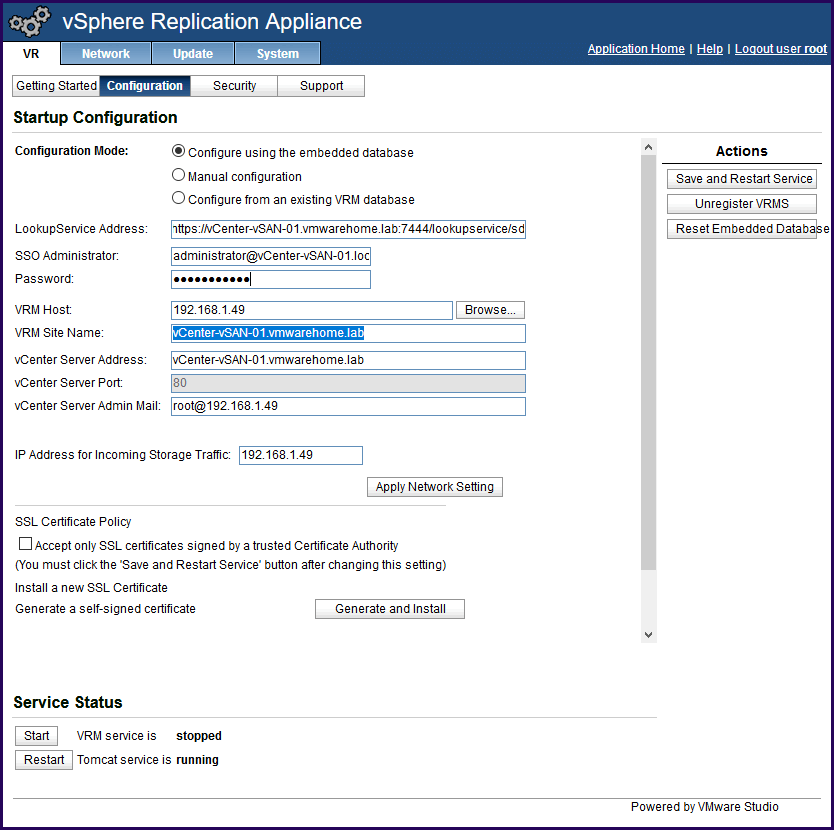
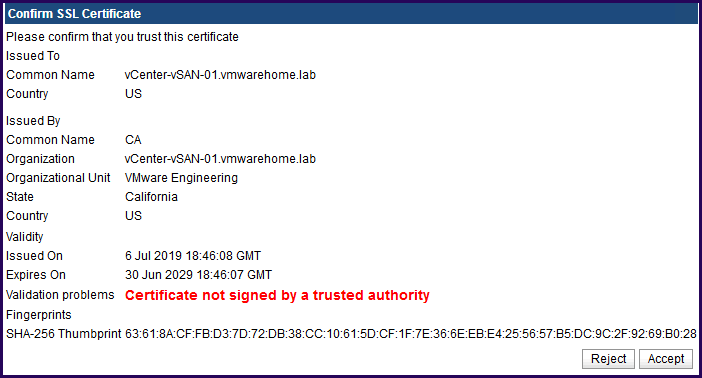
After VRM service is running and VR is now registered in the vCenter.

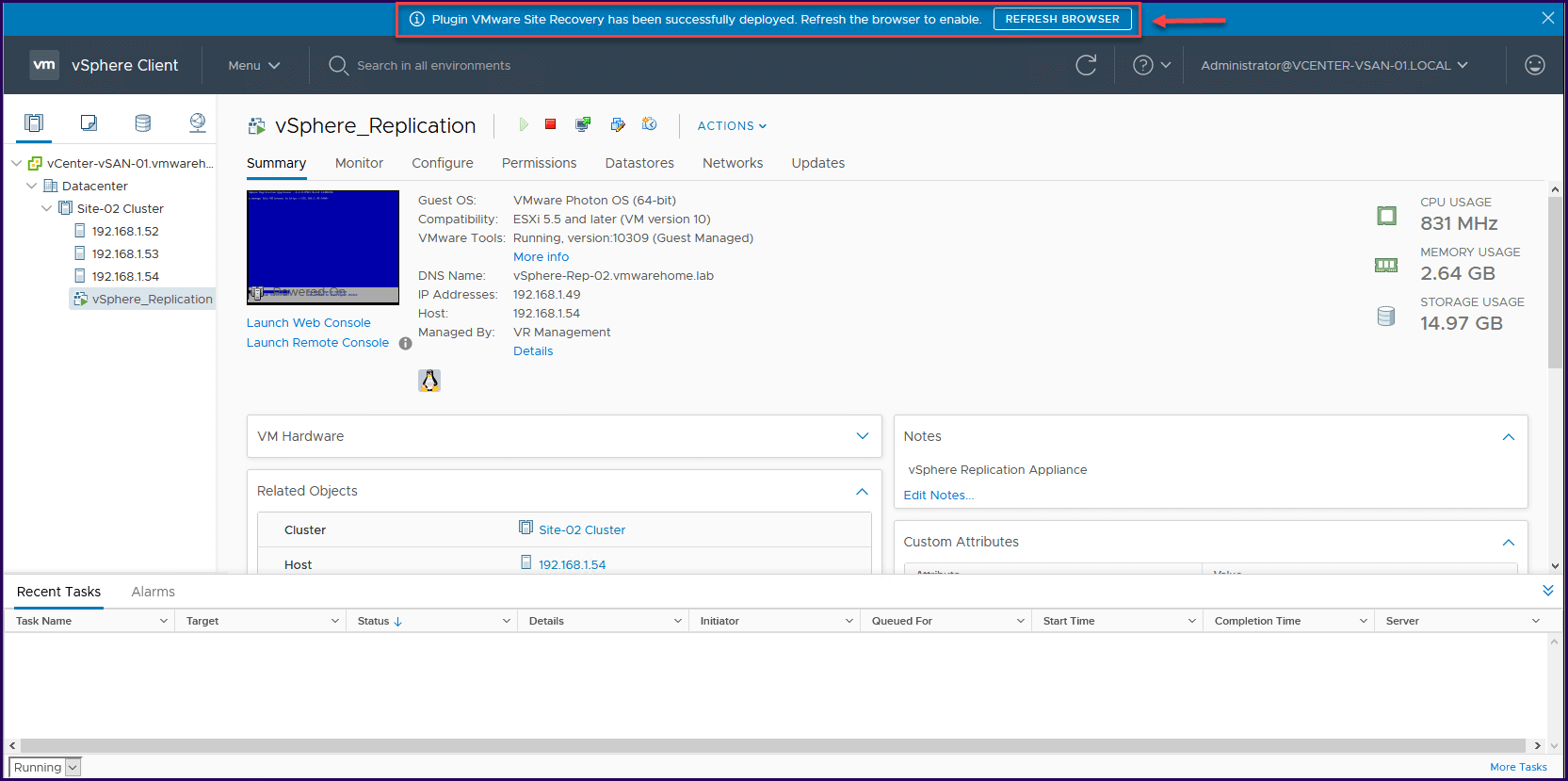

This last step finishes the deployment of vSphere Replication Appliance and register in vCenter.
Don’t forget that this process and deployment needs to be done in both sites and both vCenter (source and target).
If you are replicating between sites (like this article example), then you need to Install and register a vSphere Appliance Manager in the target vCenter also.
Next, we need to create and start the replication between sites.
How to create a Replication
- Create a site-to-site connection.
Launch vSphere Replication on the vCenter source by clicking in the shortcut Site Recovery, then click Open Site Recovery.
It will open vSphere Replication from vCenter.
- Next, click in New Site Pair to create a Replication between sites.
Note: As we can see in the next image, a Replication site is already created by default. This is internal replication on the vCenter.
As we explain above and in the first article, with this Replication, we can replicate VMs inside of the same vCenter, between Clusters and Datastores.
- Next, connect to your target PSC. If the target has an embedded PSC, then is your vCenter. If the target has an external PSC, then you need to add your PSC and credentials so that vSphere Replication can pair to the target PSC.
- Next, vSphere Replication source recognize target vCenter and the target vSphere Replication and click Next.
- In the next image, we see 1 is the Source vCenter, and 2 is the Target vCenter, click finish to create the connection pair between both vCenters.
- In the next image, we see the Site-to-Site Replication, but also the default vCenter-Local Replication (if we want to replicate inside the same vCenter in a different Cluster / Datastore).
Click the site-to-site to login and have access to vCenter (the previous login was to PSC not to the vCenter itself).
- Enter credentials for the target vCenter.
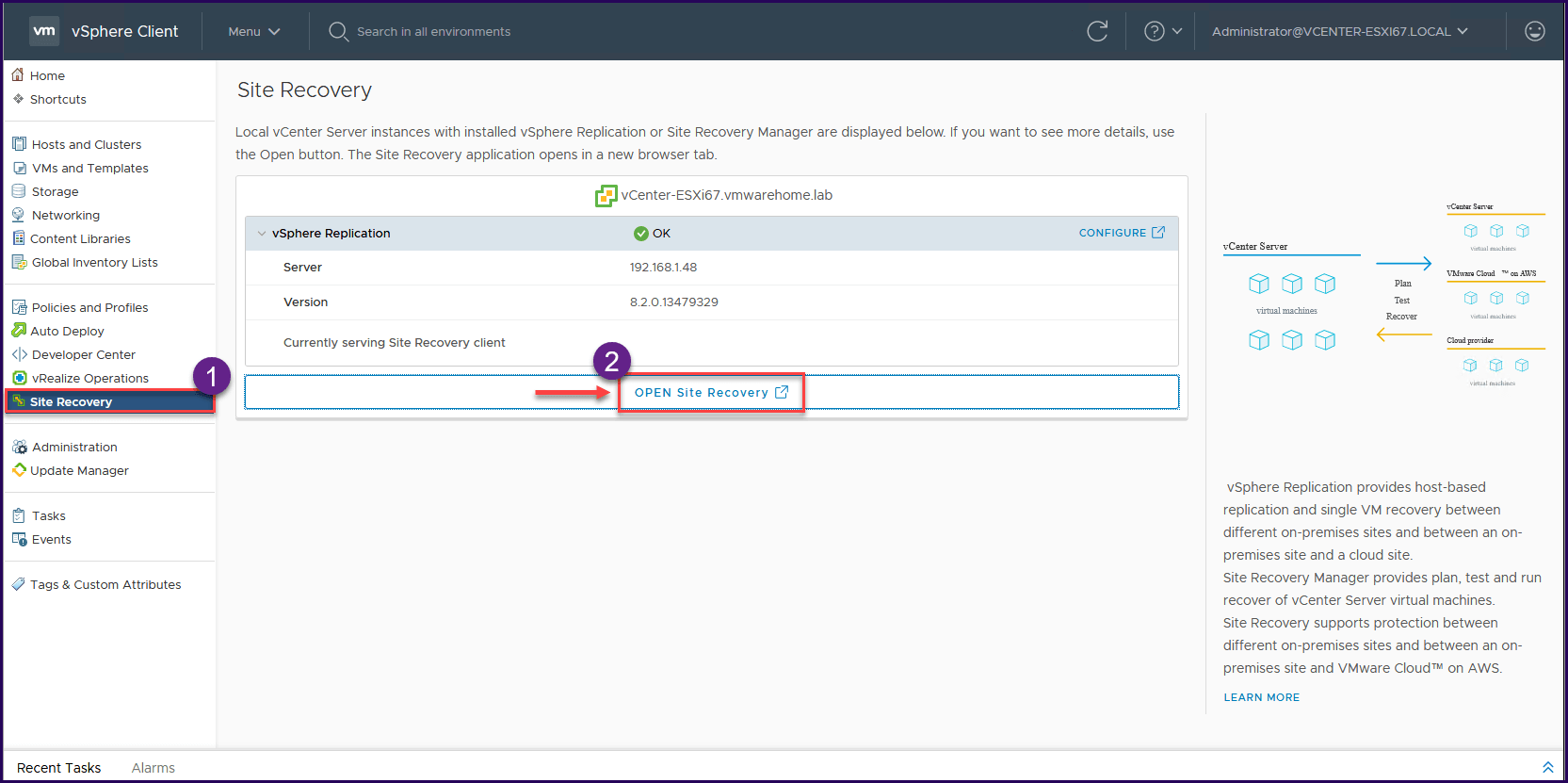
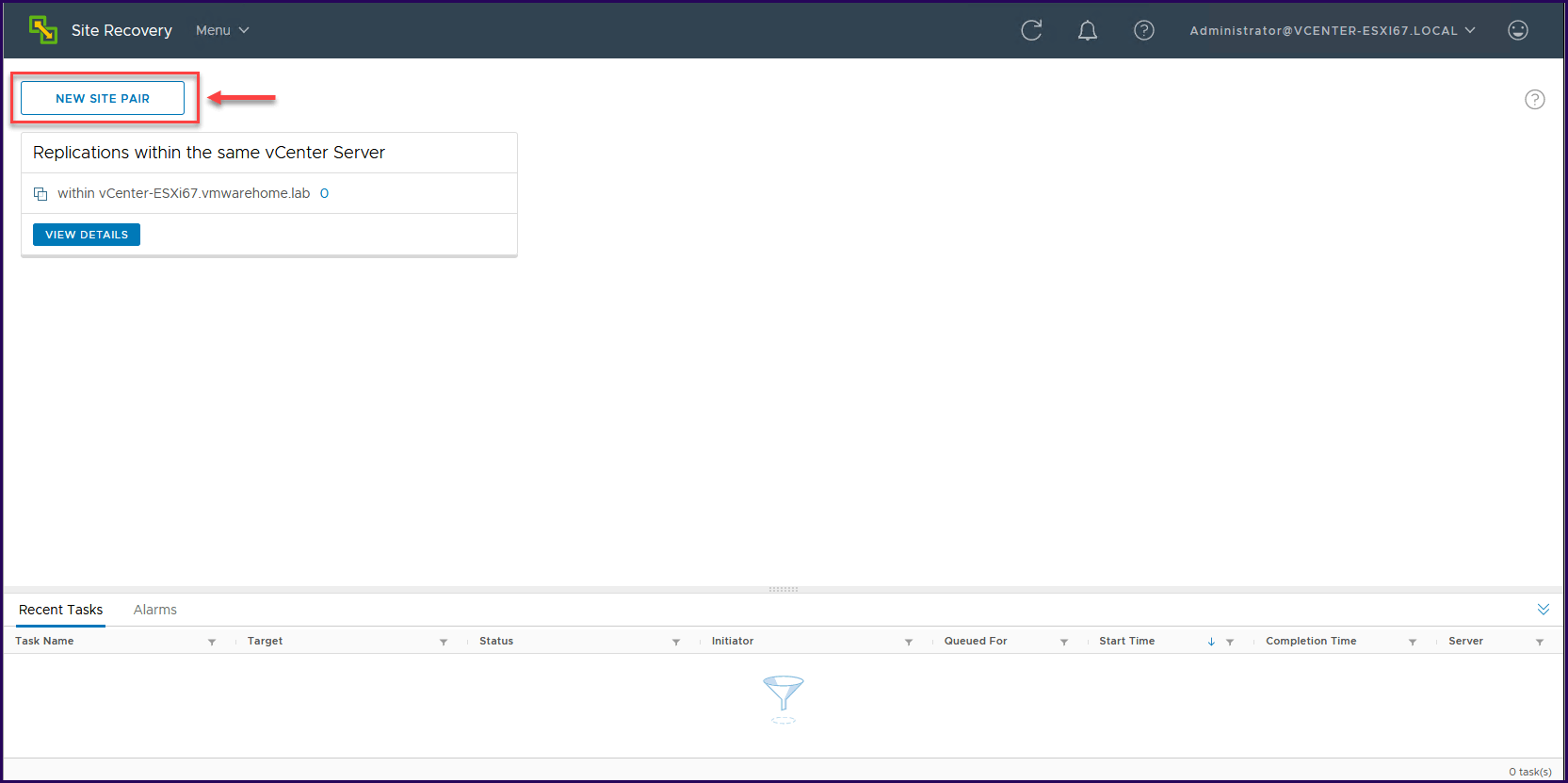
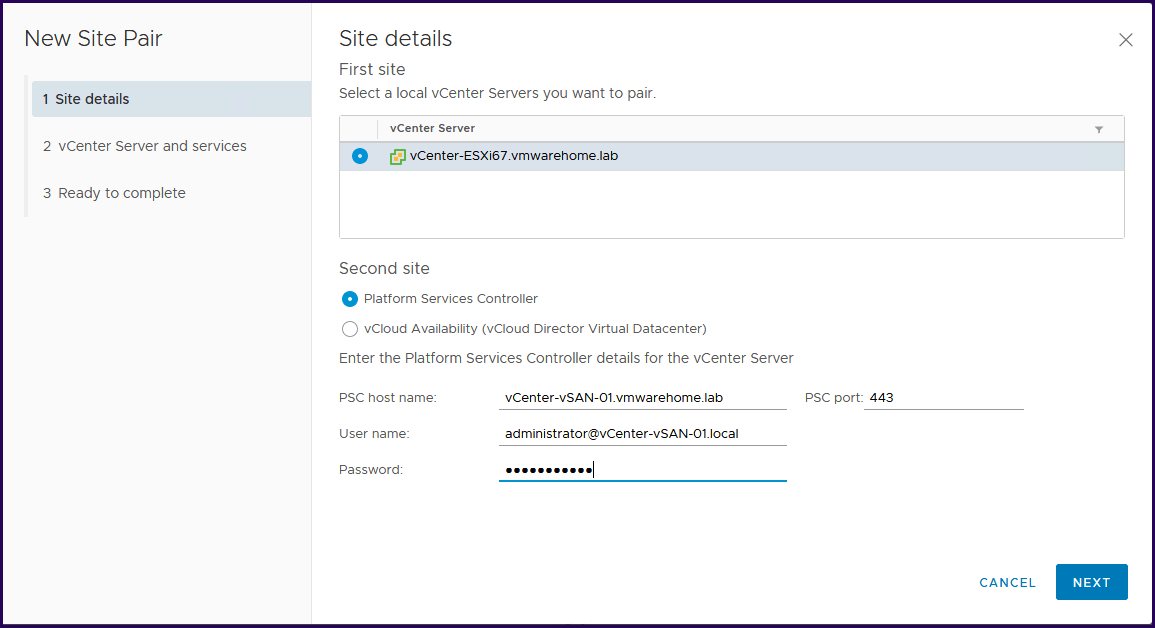
Accept the Certificate and continue.
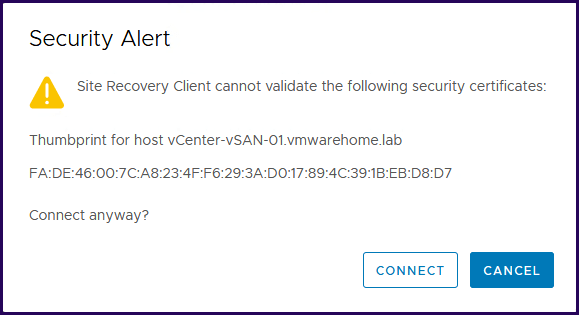
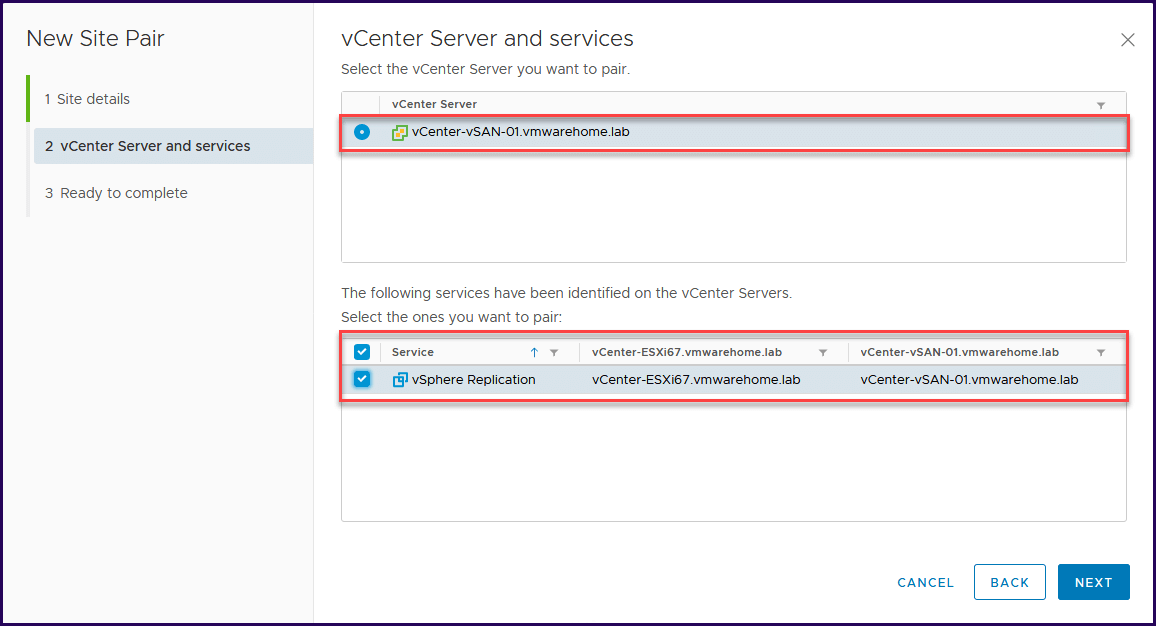
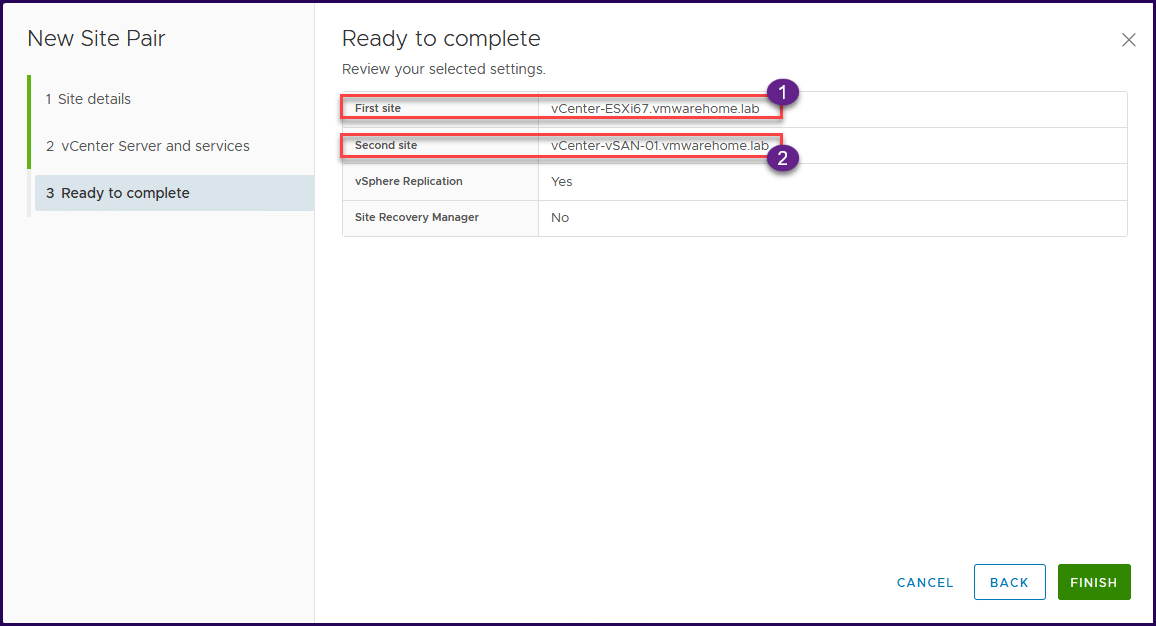
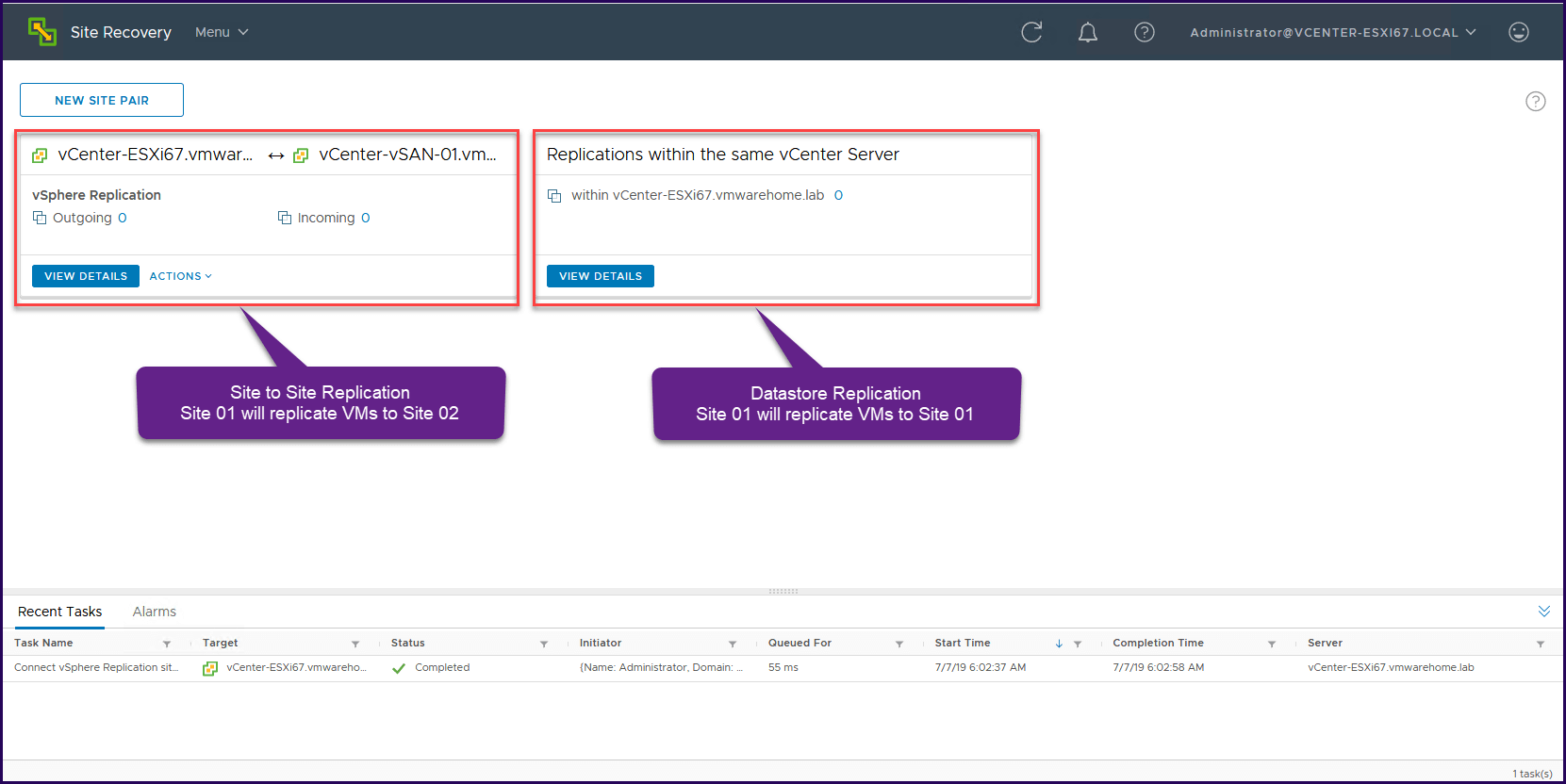
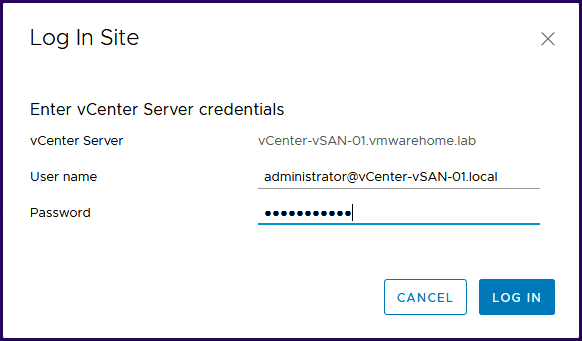
After pair is created, you now have access to target vCenter. It’s time to create the VMs replication and select which VMs will be replicated.
- Create VMs Replication.
- In the vSphere Replication click Menu and select the target vCenter.
- Next, click the Replications tab to open replication area.
- Next click in Outgoing. Since we are replicating to the target, we will have an outgoing replication.
If we want to create a replication from the target to source, then we select incoming replication.
- Next, select the VMs that you want to replicate.
Note: We do not replicate the vSphere Replication Appliance itself. It could be done, but we will not enable replication for VR.
Power off VMs are not replicated. We can add Power off VMs to the replicating list, but they will only be replicated when we Power on the VM. When we power on the VM VR automatically start replicating that VM.
- Next is one of the essential sections on our replication process. Here is where we set our RTO and RPO for our SLAs and Disaster Recovery plan.
Like we have explained in the first part of this article, too many restore points and lower RPO have a critical impact on your Replication network and also in your environment.
So plan it carefully and use it wisely. Always check if you have network bandwidth and infrastructure resources for your RPO.
- Network compression can reduce the bandwidth used to replicate your VMs. Enabling compression uses more CPU resources at both the source and target sites to compress and decompress the replicated data
- Quiescing might take several minutes and might affect RPO time. Use only for VMs that are configured to support quiescing methods
- Encryption protects VR Data against unauthorized access. Enabling encryption use more CPU resources at both the source and target sites to encrypt and decrypt the replicated data.
- Next, check your details and click finish to create the replication.
Note: Again take into account that power off VMs will not be replicated until they are power on.

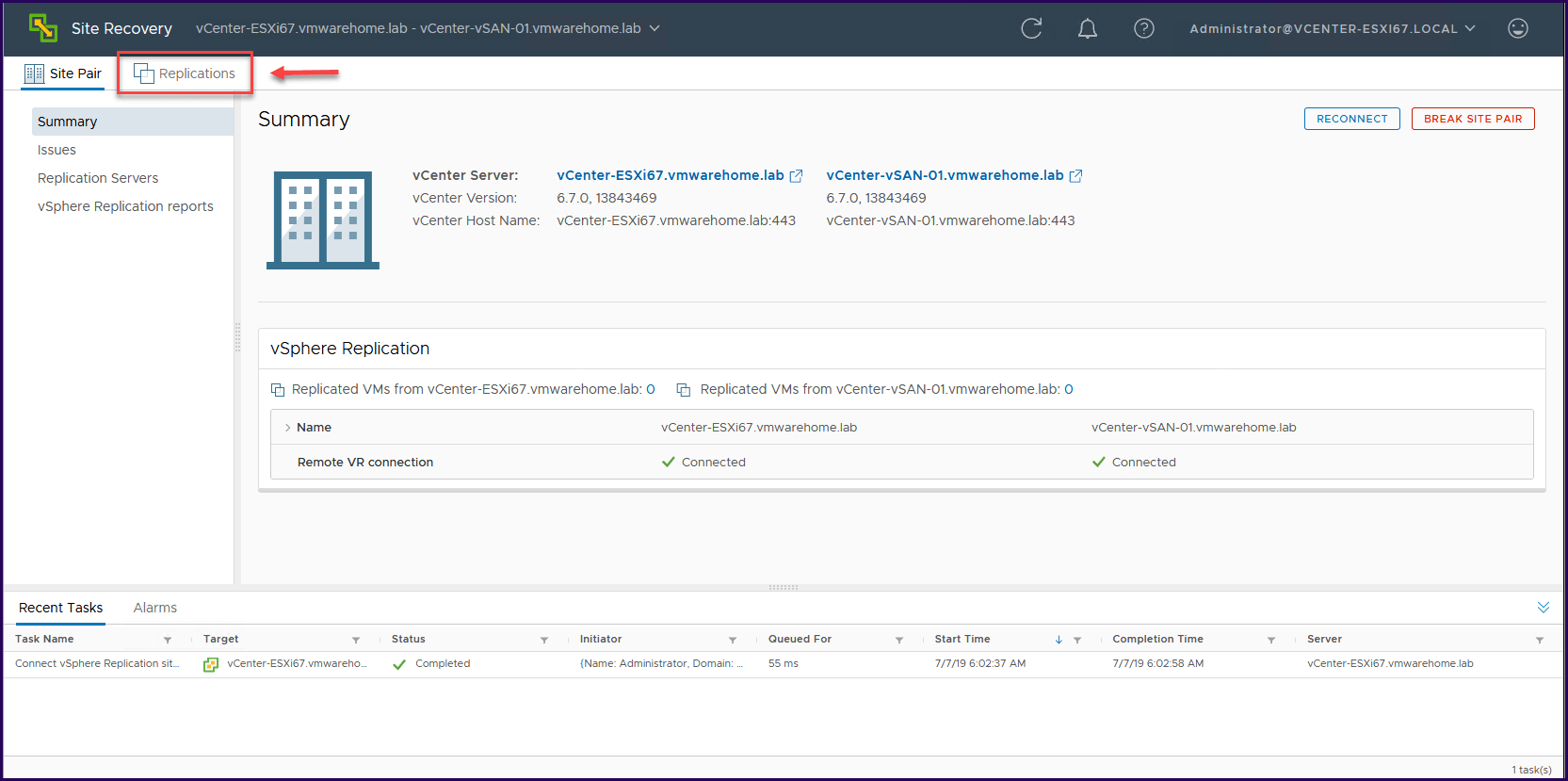
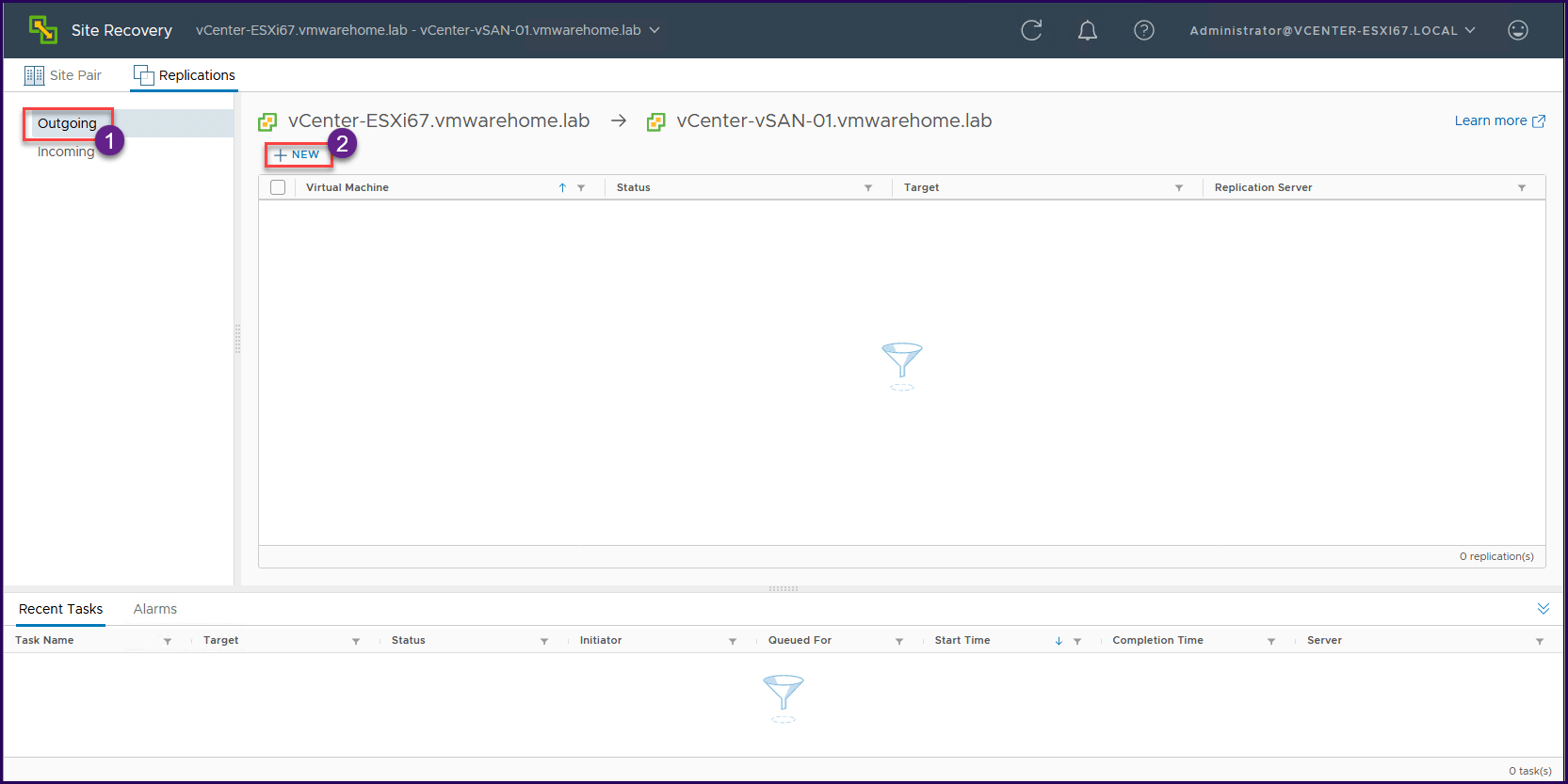
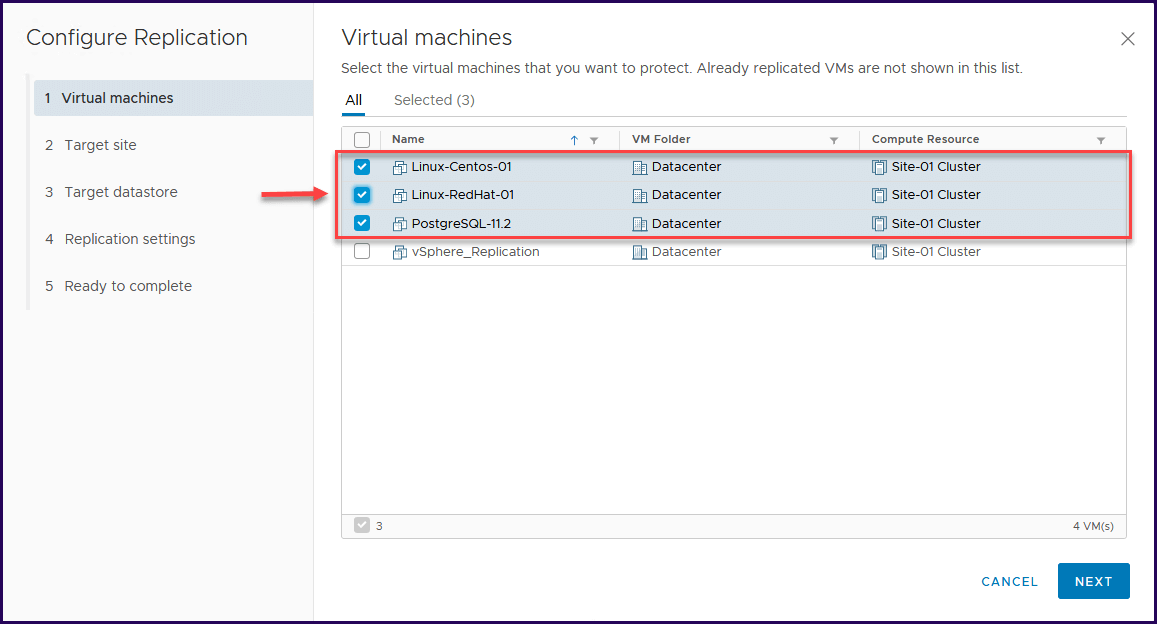
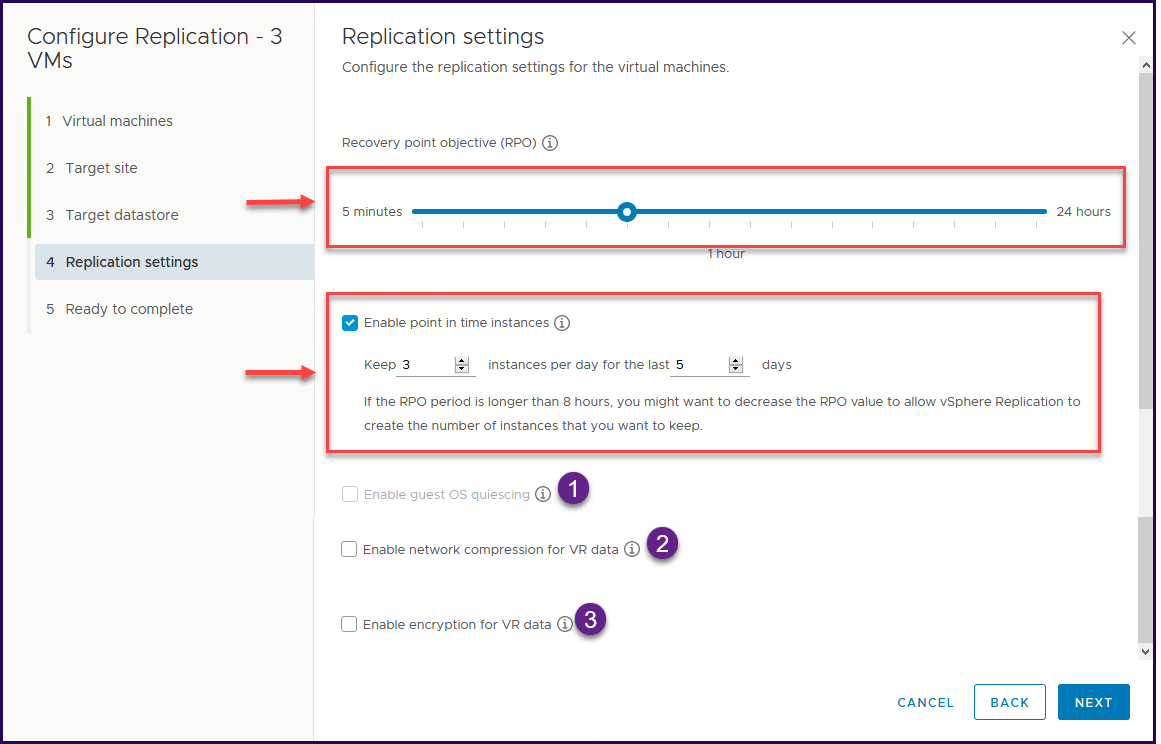
There are also extra options that we can add to our replication.
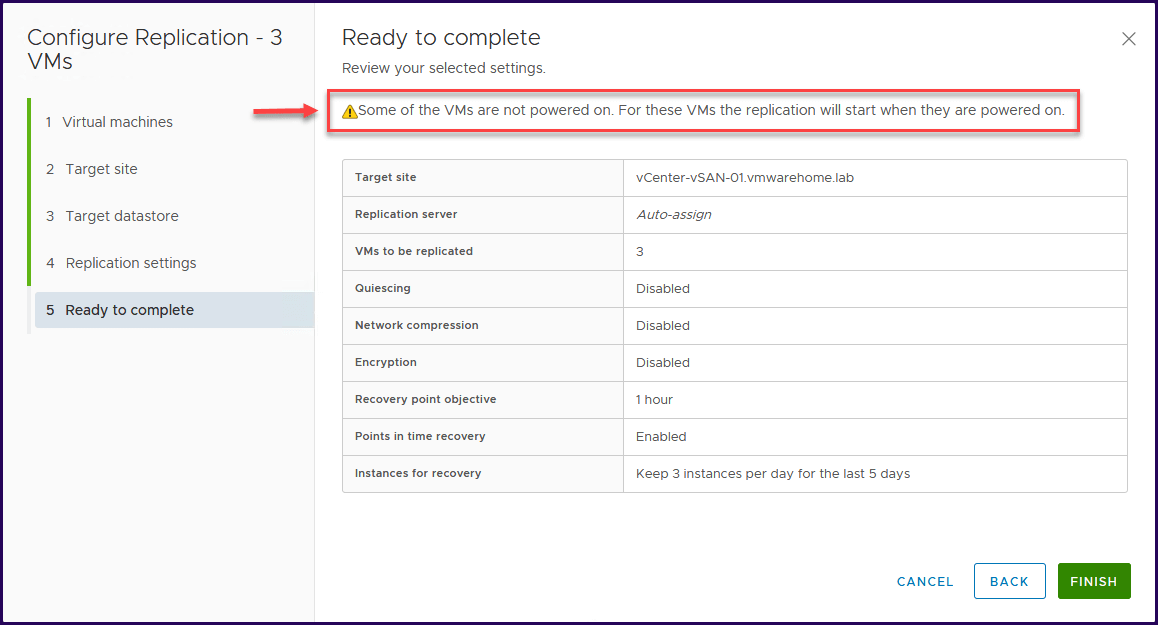
In the next image, we can see the VMs that were already replicated to the target and with 3 restores points a day.
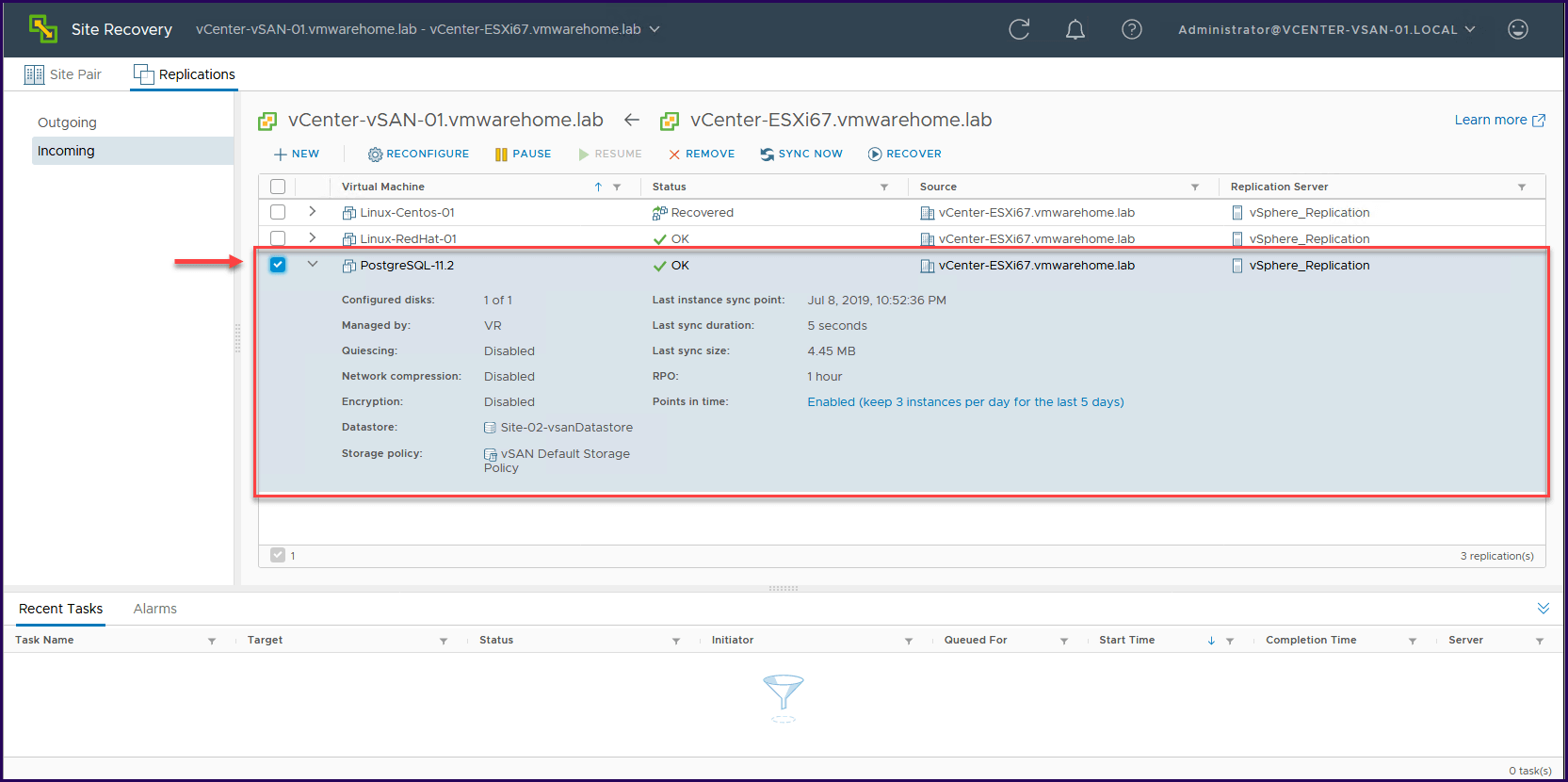
With the last task, we finished to deploy vSphere Replication and created a replication task between to sites.
Final thoughts:
In these two articles we have discussed vSphere Replication and the advantages to using a replication process in your Disaster Recovery plan, but also add a backup into that plan.
We have explained how to deploy the vSphere Replication and how to replicate between two sites.
As we have stated in the first article, for a full data protection we should have both Backup & Replication in place in your environment.
Follow our Twitter and Facebook feeds for new releases, updates, insightful posts and more.
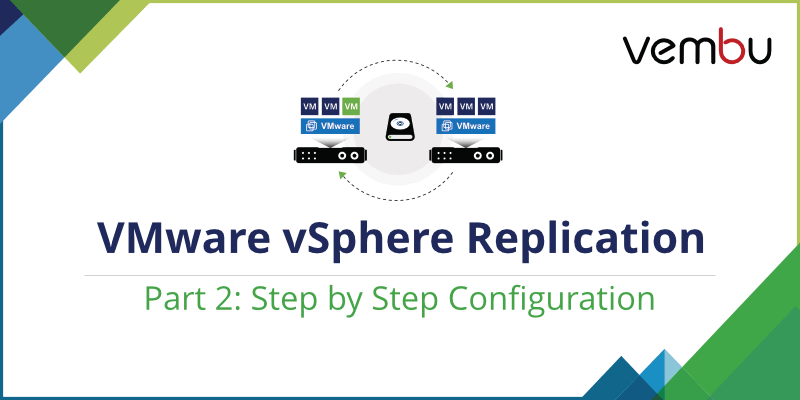
Tidak ada komentar:
Posting Komentar